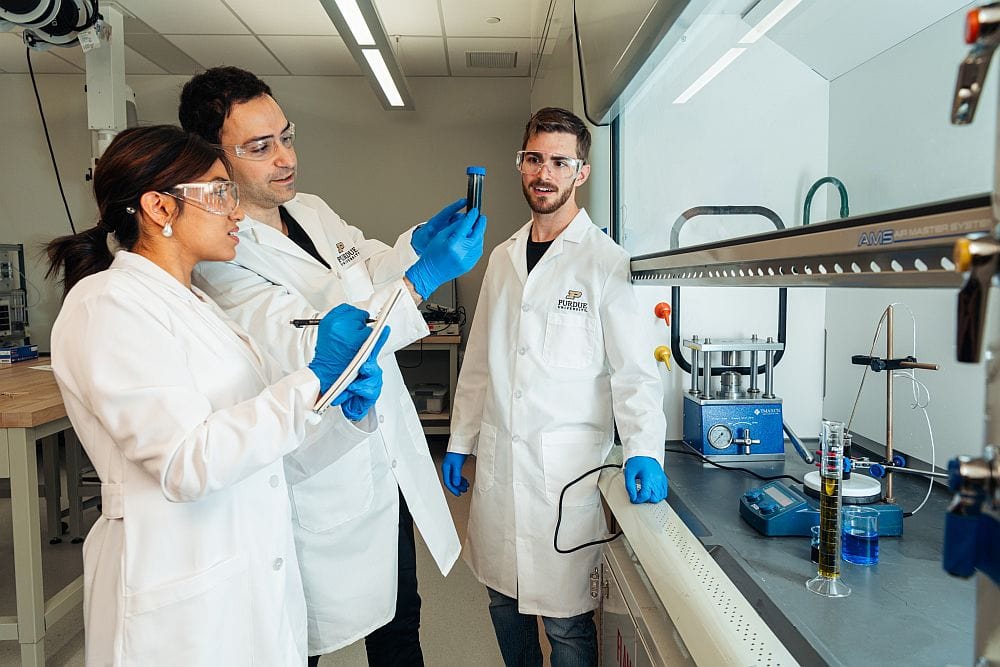
[Image above] The New York State School of Clay-Working and Ceramics (now the New York State College of Ceramics at Alfred University) was the first to accept women students into the art and technology ceramics program, shown here in 1902. In the century’s early years, women in ceramics mostly worked in pottery. Credit: The American Ceramic Society
The 20th century was a transformative period for science, marked by groundbreaking discoveries in physics, biology, chemistry, and technology. Ceramics, too, benefitted from these efforts, with the field of fine (advanced) ceramics gaining mainstream awareness in the 1970s.
In honor of Women’s History Month, we have curated a list of influential, deceased women ceramic scientists and artists who made impactful contributions across many ceramic disciplines during the 20th century.
One of the things that surprised me in doing this research is how many of these women had relatively long lives. Maybe there’s something about the study of ceramic materials that fosters longevity—I certainly hope so!
Emily Van Shoick (1894–1980)
Emily Van Schoick was a highly regarded ceramist who worked for many years on various publications of The American Ceramic Society. Upon her retirement from the Society in 1947, she became the first director of the Scholes Library at the New York State College of Ceramics at Alfred University. She retired from the library in 1960 to edit the newsletter of the National Institute of Ceramic Engineers. She also served as an inspirational figure to her nephew, fine art photography teacher Henry Holmes Smith.
Marguerite Friedlaender Wildenhain (1896–1985)
Born in Lyon, France, Wildenhain was trained as a sculptor in Germany. She worked at the Bauhaus for six years before emigrating from Germany when the Nazis came to power. After arriving in the United States, she had a strong influence on the mid-20th-century studio pottery movement.
Katherine Burr Blodgett (1898–1979)
Blodgett was the first woman to receive a Ph.D. in physics from the University of Cambridge (in 1926). Nonreflective glass is the standout invention of this physicist and chemist. Her novel coating was deposited in layers only a single molecule thick. She received eight patents over the course of her career.
Clarice Cliff (1899–1972)
Cliff was a British ceramic artist known for her bold Art Deco designs. She worked in the Potteries district of Staffordshire, England, where there was both coal and clay available. Cliff eventually became the Art Director at A. J. Wilkinson’s Royal Staffordshire Pottery. Her bold and colorful designs were so influential that Sky Cinema made a movie about her life.
Lucie Gomperz Rie (1902–1995)
Rie was an Austrian-born British studio potter who is celebrated for her modernist ceramic bowls and buttons. She studied at the Kunstgewerbeschule (School of Arts and Crafts) associated with the Wiener Werkstätte (Vienna Workshop) in Vienna and established a name for herself in Austria by the 1930s.
When the Nazis annexed Austria in 1938, Rie, who was Jewish, fled to the United Kingdom. She was forced to reestablish herself professionally. When World War II broke out, she was classed as an enemy alien and had to take work in the garment industry making ceramic buttons and umbrella handles to survive.
After the war, British ceramists began experimenting and breaking free of tradition in both forms and glazes. In the 1950s and 1960s, Rie’s renown spread. Her work emphasized refined shapes and vivid colors, and it is sought by collectors today.
Anna O. Shepard (1903–1971)
Shepard was an archaeologist whose work with ancient pottery of the U.S. Southwest became the foundation of her influential book, Ceramics for the Archaeologist. This book is still used in archaeology classes today. The American Ceramic Society’s Art, Archaeology & Conservation Science Division presents an award in her honor. In 2024, the award was presented to Chandra Reedy, professor of historic preservation at my hometown institution, the University of Delaware!
Vivika Heino (1910–1995)
Heino was the first woman Master of Fine Arts (MFA) graduate from the New York State College of Ceramics at Alfred University, and only the second MFA graduate in that program. She was known for her mastery of glazes and strong forms. She, along with her husband Otto Heino, were very influential in the ceramic world. They collaborated as a team for many years, signing their work Vivika + Otto, regardless of who made the piece.
Josephine “Jo” Gitter (1912–1993)
A daughter of a ceramic engineer from Zanesville, Ohio, Gitter was the first woman to graduate from The Ohio State University’s ceramic engineering program. Gitter had a successful career as a self-employed manufacturer’s representative and was by many accounts “the heart and soul of many of [The American Ceramic Society’s] best social events,” as reported in the book American Ceramic Society: 100 Years.
Esther Miller Tuttle (1920–2005)
Tuttle received her undergraduate degree from Alfred University and went on to become the first woman to receive a Ph.D. in ceramic engineering from the University of Illinois. She was only the second woman recipient of a Ph.D. from that institution. She had a diverse career as a spectroscopist and petrographer. In later life, she helped to establish the Milton A. Tuttle Award in honor of her husband, who also taught ceramic engineering. It is given each year at Alfred to recognize an outstanding ceramic engineering graduate.
Toshiko Takaezu (1922–2011)
Takaezu is known as one of the 20th century’s greatest abstract artists. Born the daughter of Japanese immigrants in Hawaii, she moved to Honolulu at age 18 and took a job as a housekeeper for Hugh and Lita Gantt, the founders of the Hawaii Potters’ Guild. Her style as a potter evoked traditional Japanese aesthetics blended with Abstract Expressionism. Her large, rounded forms with narrow openings became a hallmark of her work.
Ladi Kwali (1925–1984)
Kwali was a potter in British colonial Nigeria, whose work blended traditional Nigerian pottery techniques with studio pottery techniques she learned in the Abuja Pottery Training Center. Her work became internally known in the 1960s, and after her death the Pottery Training Center was renamed in her honor. She was also honored as the first woman to appear on Nigerian paper currency.
Della Martin Roy (1926–2021)
Roy was a pioneering materials scientist and ceramic engineer. She received a bachelor’s degree in chemistry from the University of Oregon in 1947, then moved on to The Pennsylvania State University. She shared an office with an Indian graduate student in physics, Rustum Roy, whom she married in 1948.
After completing her Ph.D. at Penn State in 1952, Roy joined the faculty there. She and another Penn State faculty member, Kathleen Mourant, founded the journal Cement and Concrete Research in 1971. She was the first woman elected to the National Academy of Engineering, for her contributions to cement and concrete technology.
The American Ceramic Society’s Cements Division presents an award in her honor. In 2024, the award was presented to Maria Juenger, the L.B. (Preach) Meaders Professor of Engineering at the University of Texas at Austin.
Women ceramists of today
The women highlighted above are just a small sampling of the many, many women who have made—and continue to make—pivotal and innovative contributions to ceramic art, science, and technology.
To learn more about contemporary women ceramists leaving their mark on the world, check out the book Successful Women Ceramic and Glass Scientists and Engineers: 100 Inspirational Profiles by Lynnette D. Madsen, program director for ceramics in the Division of Materials Research at the National Science Foundation. Also explore the Women in Glass special issue published in International Journal of Applied Glass Science.
Further reading
Headstrong: 52 Women Who Changed Science—and the World (by Rachel Swaby, 2015)
Women in Science: 50 Fearless Pioneers Who Changed the World (by Rachel Ignotofsky, 2016)
Update 3/27/2025 – Year of death for Della Martin Roy corrected
Author
Becky Stewart
CTT Categories
- Art & Archaeology
- Education


